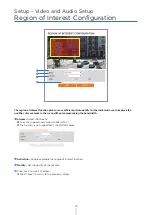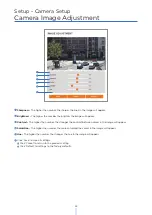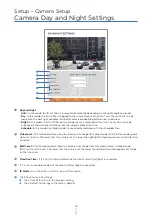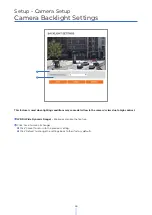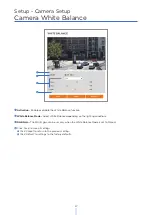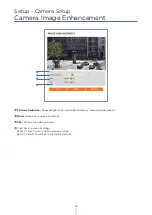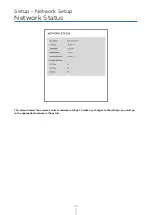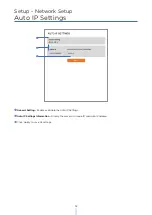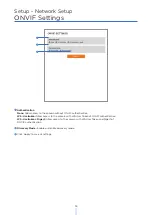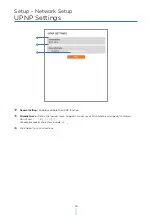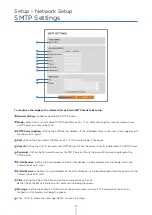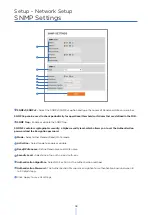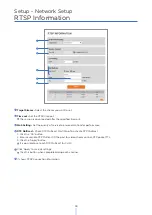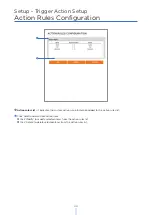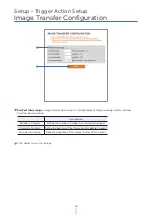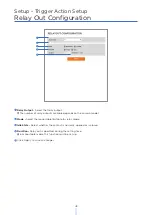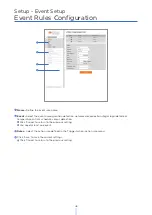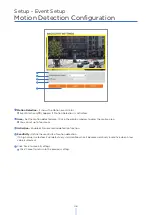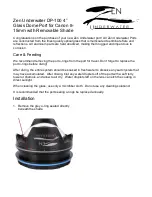
31
Setup - Network Setup
Network Settings
1
2
3
4
7
5
8
6
9
10
1
Network Type -
Define the network IP address type. Select Static Mode for a fixed IP or Dynamic Mode for a
dynamic IP address.
If you select Static Mode, enter the camera's IP Address, Subnet Mask, Gateway, DNS Server, and all ports.
If you select Dynamic Mode, the IP address will be assigned automatically by the DHCP network requirements.
If you click 'Apply', the system will reboot and you will have to reconnect the camera using the new IP address.
2
IP Address -
A unique string of numbers, divided into four octets (ranging from 0-255), used to identify the
device over a network.
3
Subnet Mask -
Determines the range of IP address options within the network.
4
Default Gateway -
IP address of the forwarding host within the network; the IP address of the router that is
most commonly used.
5
Preferred DNS Server -
Address of the decentralized system used to translate alphabetic names into
IP addresses.
6
Alternate DNS Server -
Secondary address of the decentralized system used to translate alphabetic names
into IP addresses.
7
HTTP Port -
The HTTP port can be set to the default 80 port or any value between 1025 to 60000.
8
HTTPS Port -
The HTTPS port can be set to the default 443 port or any value between 1025 to 60000.
9
RTSP Port -
The RTSP port can be set to the default 554 port or any value between 1025 to 60000.
10
Click ‘Apply’ to save all settings.
If the network type is dynamic, the IP address is changed in the following cases. In these cases, the IP
address needs to be searched again, and the camera needs to be reconnected:
• When the camera's power is switched off and on.
• After firmware update, or when the camera is reset to its default settings and reboot.



